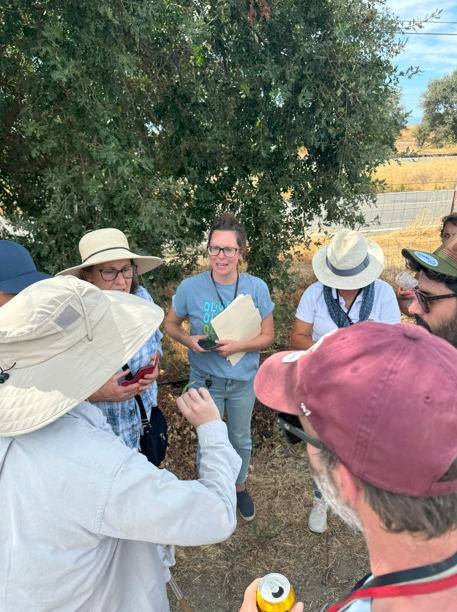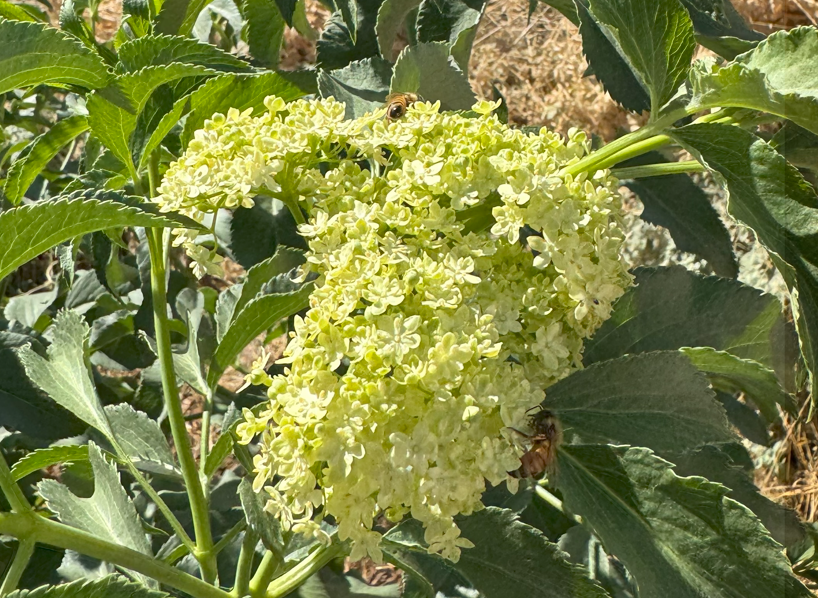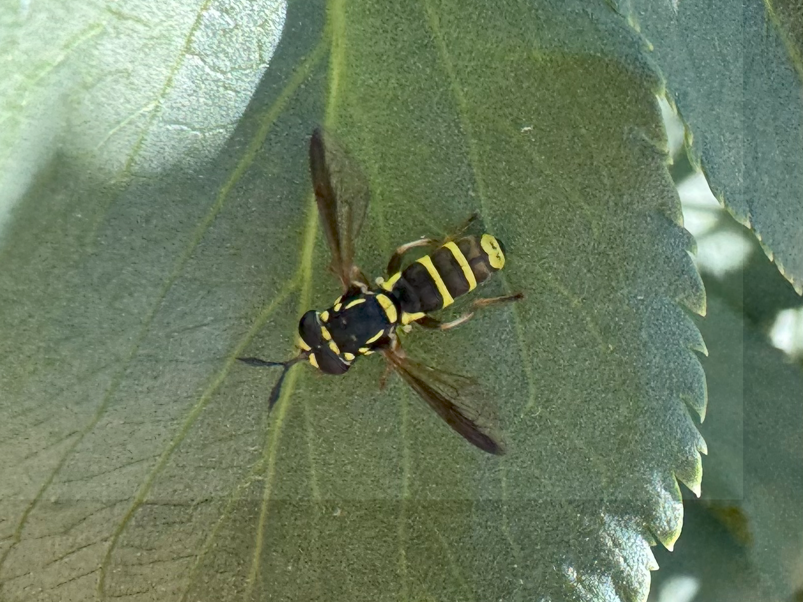At the International Olive Sustainability Conference, the Center for Regenerative Agriculture researchers demonstrate on-farm biodiversity through an interactive tour of a hedgerow funded by the CDFA Pollinator Habitat Program

In September 2024, the UC Davis Olive Center hosted the International Olive Sustainability Conference (IOSC), gathering global experts in sustainable olive production. As part of the post-conference tours, participants visited California Olive Ranch (COR), one of the partnered growers under the American Olive Oil Producers Association (AOOPA). AOOPA received funding through the CDFA’s Pollinator Habitat Program to support pollinator habitat implementation across California olive farms. The tour featured a native hedgerow planted in April 2024 to enhance biodiversity and support beneficial insect communities.
Dr. Elizabeth Boyd, entomologist and professor, and Gerardo Tapia, graduate researcher pursuing a Master of Science in Regenerative Agriculture and supported by the Center for Regenerative Agriculture and Resilient Systems (CRARS) at California State University, Chico, led an interactive tour of the hedgerow. Using sweep nets and vials, they highlighted the presence of native pollinators and natural enemies, including parasitic wasps and predatory lacewings. Attendees had the opportunity to observe lacewing eggs within both the hedgerow and the adjacent olive grove. Additional beneficial insects observed included syrphid flies, Western European honeybees, and assassin bugs. A plant species list was distributed while participants engaged in discussion about the hedgerow’s influence on olive grove ecology, pollinator diversity, and regenerative management practices.



Although olive trees are self-pollinating and do not depend heavily on insect pollinators, the hedgerow provides critical habitat for pollinators, beneficial insects, and wildlife. COR’s implementation of this hedgerow through the Pollinator Habitat Program reflects growing interest in ecological solutions that offer multiple on- farm benefits, including erosion control, soil health, and biodiversity.

Left: intensive olive planting.
Right: established hedgerows.
Photo taken May 2, 2025.
In addition, Gerardo Tapia is conducting research for his master’s thesis to evaluate how hedgerows influence the functional composition of beneficial insect communities in olive groves. The study compares field margins with and without hedgerows using non-lethal, catch-and-release methods. Functional groups studied include pollinators, predatory insects, and parasitoid wasps.
These efforts highlight the value of habitat enhancement, even in low-pollinator-dependent systems. They also highlight the importance of collaborative approaches between producers, researchers, and agencies like CDFA in supporting a more resilient agricultural landscape!
By: Gerardo Tapia Jr and Elizabeth A. Boyd, Ph.D. (Center for Regenerative Agriculture and Resilient Systems)

